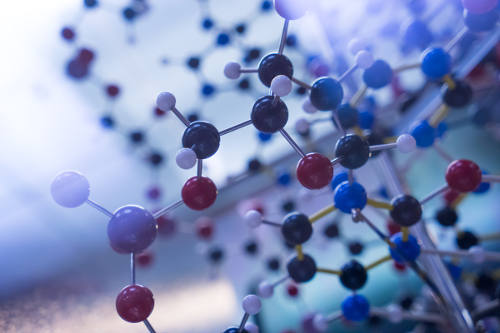Using AI to control energy for indoor agriculture
30 September 2024
Published online 14 May 2017
DNA repair mechanism proves vital for mitochondrial integrity.

© Getty Images\iStockphoto
The discovery builds on over a decade of research by Sherif El-Khamisy, a geneticist at the University of Sheffield and Egypt’s Zewail City of Science and Technology.
In 2005, El-Khamisy showed that TDP1, a gene which had already been linked with neurological disorders, is necessary to repair nuclear DNA damaged when the TOP1 protein malfunctions.
Normally, TOP1 nicks one of the DNA strands, unwinds the molecule for transcription or replication, and then repairs the cut. When the process stalls or misfires, TOP1 doesn’t repair the cut, and TDP1 is needed to patch up the damage. Both TOP1 and TDP1 are encoded by the nuclear genome.
A few years ago, El-Khamisy set out to discover whether these protein-linked DNA breaks also occur in mitochondria, which have their own genome. While TOP1 is less likely to stall and cause damage in the smaller and simpler mitochondrial genome, the mitochondria also produce reactive oxygen species which might interfere with TOP1.
“The integrity of mitochondrial DNA has been ignored for many years, and the mechanisms that repair it aren’t well characterized,” says El-Khamisy.
To investigate the role of TOP1 and TDP1 in mitochondrial DNA, El-Khamisy’s team engineered a system in which TDP1 could be temporarily deactivated in cells carrying either normal TOP1 or a version mutated to leave unrepaired nicks. When they extracted mitochondria from these cells, they found only a slight effect from the TOP1 mutation alone, while cells lacking TDP1 had many more DNA breaks, and the two changes in combination resulted in over ten times as many breaks as normal.
“Many of the experiments are very elegant, particularly the use of a mutant mitochondrial TOP1 to specifically look at TDP1’s role in repairing mitochondrial DNA,” says Michael Weinfeld, an expert in DNA damage who wasn’t involved in the study.
The absence of TDP1 sets off a downward spiral of damage. As unrepaired breaks accumulate, the transcription of mitochondrial genes falters. The resulting imbalance between mitochondrial and nuclear transcription disrupts the mitochondria’s energy-generating machinery, which is built from components encoded by the two genomes. The malfunctioning power plant produces more reactive oxygen species, which interferes with TOP1, creating more DNA breaks and pushing the cell into ever greater trouble.
The findings raise potential issues for ‘three-parent babies’ in which defective mitochondrial DNA in an egg or embryo is replaced with healthy DNA from a donor.
“The idea of three-parent babies is based on the assumption that there is very little interaction between the mitochondria and the nucleus, but we’ve shown that repair toolkits encoded by nuclear genes are important to maintain mitochondrial DNA integrity,” says El-Khamisy, sounding a word of caution that “it might be important to screen enzymes like TOP1 and TDP1 before mitochondrial replacement procedures.”
The team is currently investigating whether the neurological disorders linked with TDP1 mutations and other protein-linked DNA breaks have their origin in mitochondria rather than the nucleus, as well as working with Cancer Research UK to develop small molecule inhibitors that could disrupt mitochondrial DNA repair specifically in cancer cells.
doi:10.1038/nmiddleeast.2017.83
Stay connected: